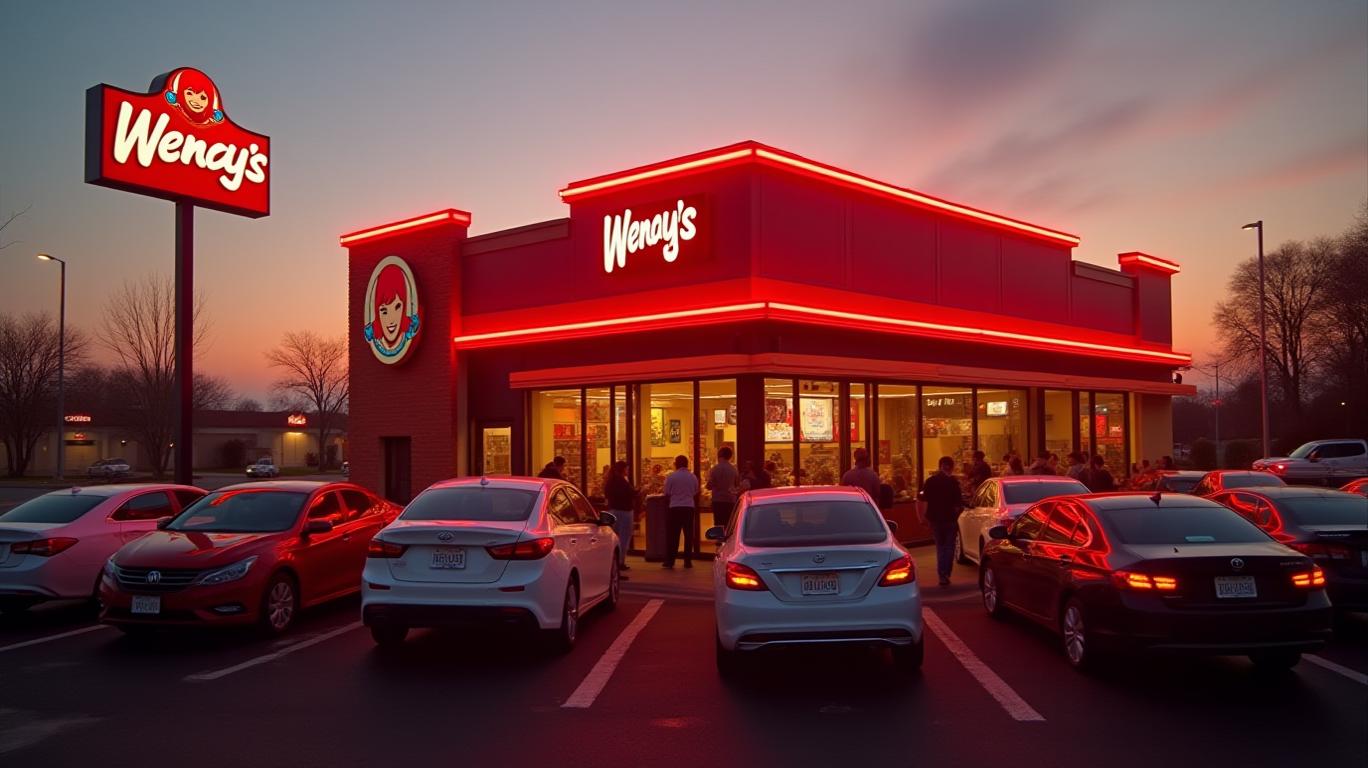Wendy's Q1 2025 Earnings: Navigating Challenges in a Sluggish Market
Wendy’s recent Q1 2025 earnings report underscores a brewing storm in the fast-food sector. Despite its iconic Frosty desserts and menu innovations like the Spicy Chicken Sandwich, the chain posted declines in both revenue and net income, signaling deeper industry-wide headwinds. Let’s dissect the numbers, the company’s response, and what this means for investors.

The Numbers Tell a Story of Struggle
Total revenue fell 2.1% year-over-year to $523.5 million, driven by weaker sales at company-owned restaurants, lower advertising funds, and a dip in franchise royalty revenue. Net income dropped 6.7% to $39.2 million, with pressure coming from rising interest expenses and a slump in investment income. Even adjusted EBITDA, a key profitability metric, declined 2.6% to $124.5 million, reflecting higher operational costs and margin squeezes.
The most glaring issue? U.S. same-restaurant sales fell 2.8%, a stark contrast to the 8.9% growth in international markets. This divergence hints at a domestic consumer environment that’s becoming increasingly tough for quick-service restaurants (QSRs). With labor costs rising and commodity prices fluctuating, Wendy’s is grappling with the same inflationary pressures that have plagued rivals like McDonald’s and Burger King.
What’s Driving the Slump?
- Traffic Declines: A 2.8% drop in U.S. same-store sales suggests customers are either trading down or seeking alternatives. Competitors’ aggressive promotions (e.g., McDonald’s all-day breakfast) and value menus may be diverting traffic.
- Cost Pressures: Labor and commodity costs are eating into margins. The Q1 report noted that higher food costs and staffing expenses contributed to a 130 basis point margin compression in U.S. company-operated restaurants.
- Franchise Headwinds: Franchise royalty revenue—a steady cash cow for QSRs—dropped as sales stagnated. Franchisees, already operating on thin margins, may be struggling to invest in marketing or menu innovation.
Silver Linings and Strategic Moves
Amid the gloom, several positives emerge:- Digital Growth: Digital sales hit a record 20.3% of global sales, up from 19.5% in Q1 2024. This reflects Wendy’s success in mobile ordering and delivery partnerships.- Global Expansion: The company added 68 net new restaurants globally, maintaining its 2-3% annual unit growth target. International markets (e.g., China, the Middle East) are outperforming the U.S., offering long-term growth potential.- Shareholder Returns: Wendy’s returned $173.5 million to investors via dividends and buybacks. With $60 million remaining on its $235 million repurchase authorization, management is signaling confidence in the stock’s undervalued status.
The Bottom Line: A Hold with Long-Term Potential
Wendy’s Q1 results are a red flag for the U.S. QSR market but not a death knell. The company’s global expansion, digital prowess, and disciplined capital allocation provide a foundation for recovery. However, investors must weigh these positives against key risks:- U.S. Consumer Sentiment: A stagnant or declining economy could further hurt traffic and margins.- Competitive Intensity: Rival promotions and menu innovation (e.g., chicken sandwiches from multiple chains) could keep pressure on sales.- Supply Chain Volatility: Commodity prices and labor shortages remain unpredictable.
Final Analysis
Wendy’s is a classic “value” play at current prices. Its 1.7% dividend yield and $60 million remaining buyback capacity offer some downside protection. However, investors should demand clear signs of U.S. sales recovery and margin stabilization before betting big. The stock’s valuation—trading at 14.5x trailing EBITDA versus McDonald’s 25.3x—suggests the market already discounts these risks. For now, a hold rating seems prudent, with a cautious eye on Q2 results and the company’s ability to reignite U.S. same-store sales growth. The Frosty might still be cold, but the path to profitability is anything but straightforward.


_442a2dcc1749832873286.jpeg)
_e68fac6d1749831664430.jpeg)






